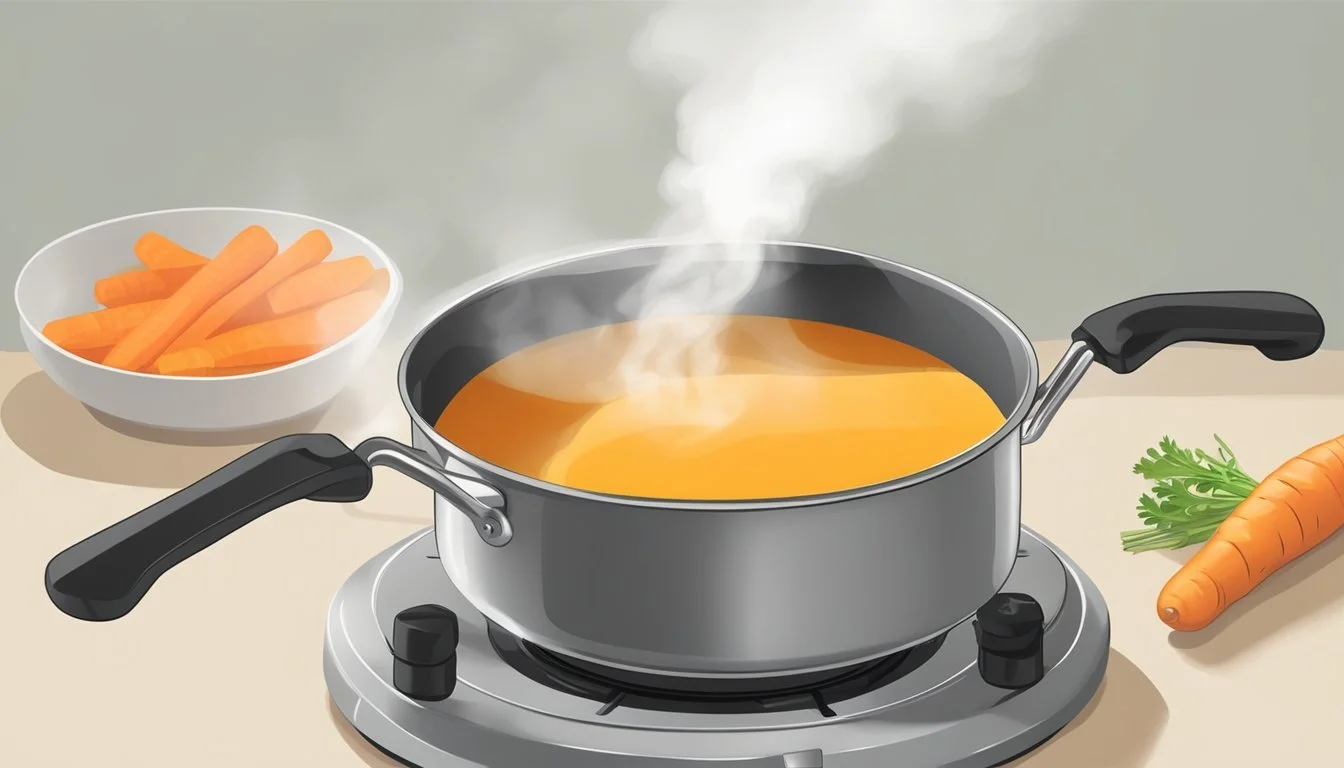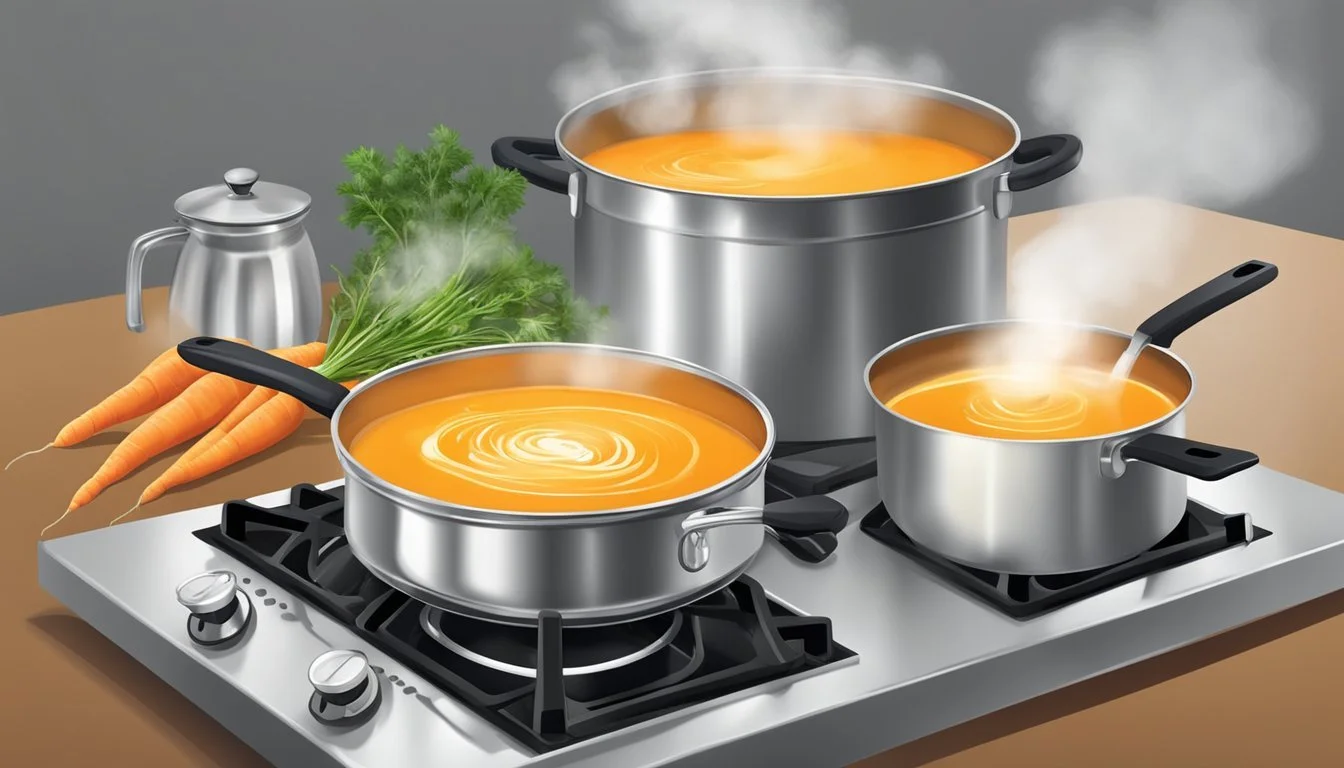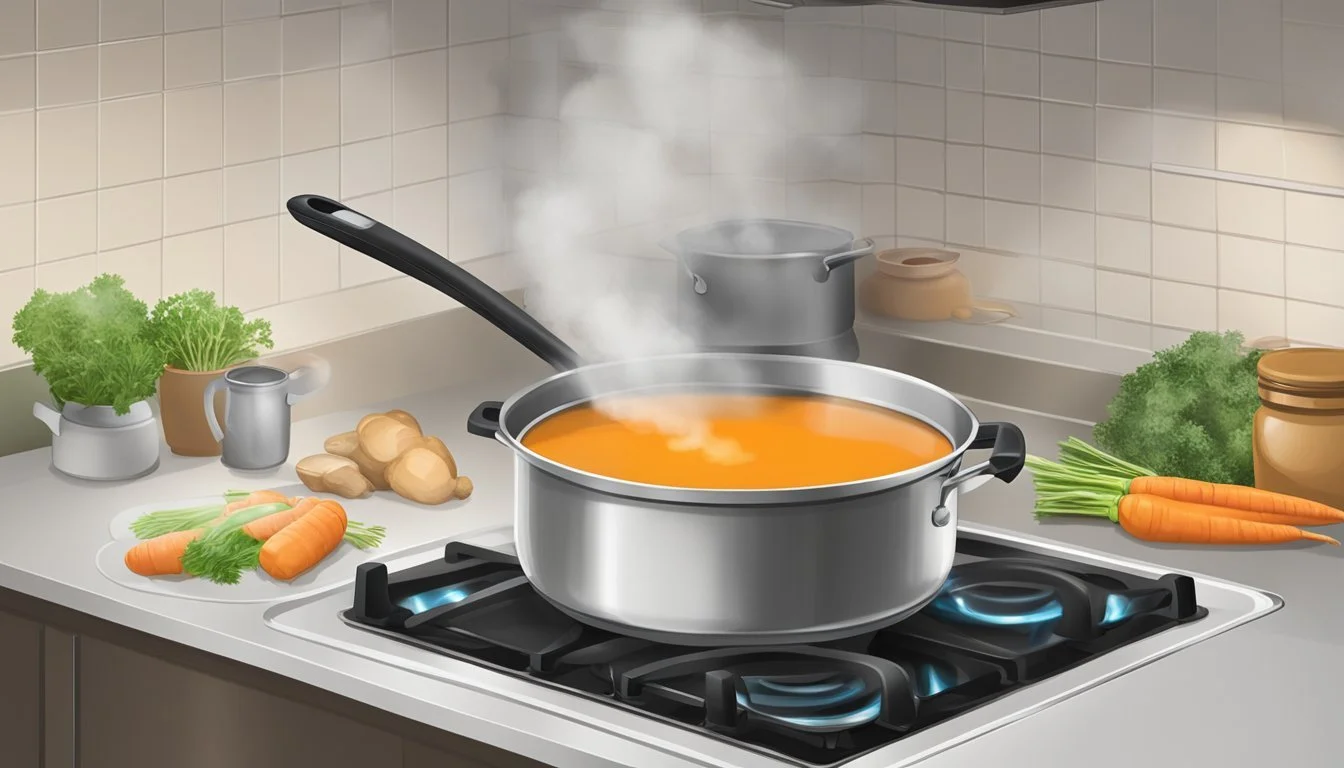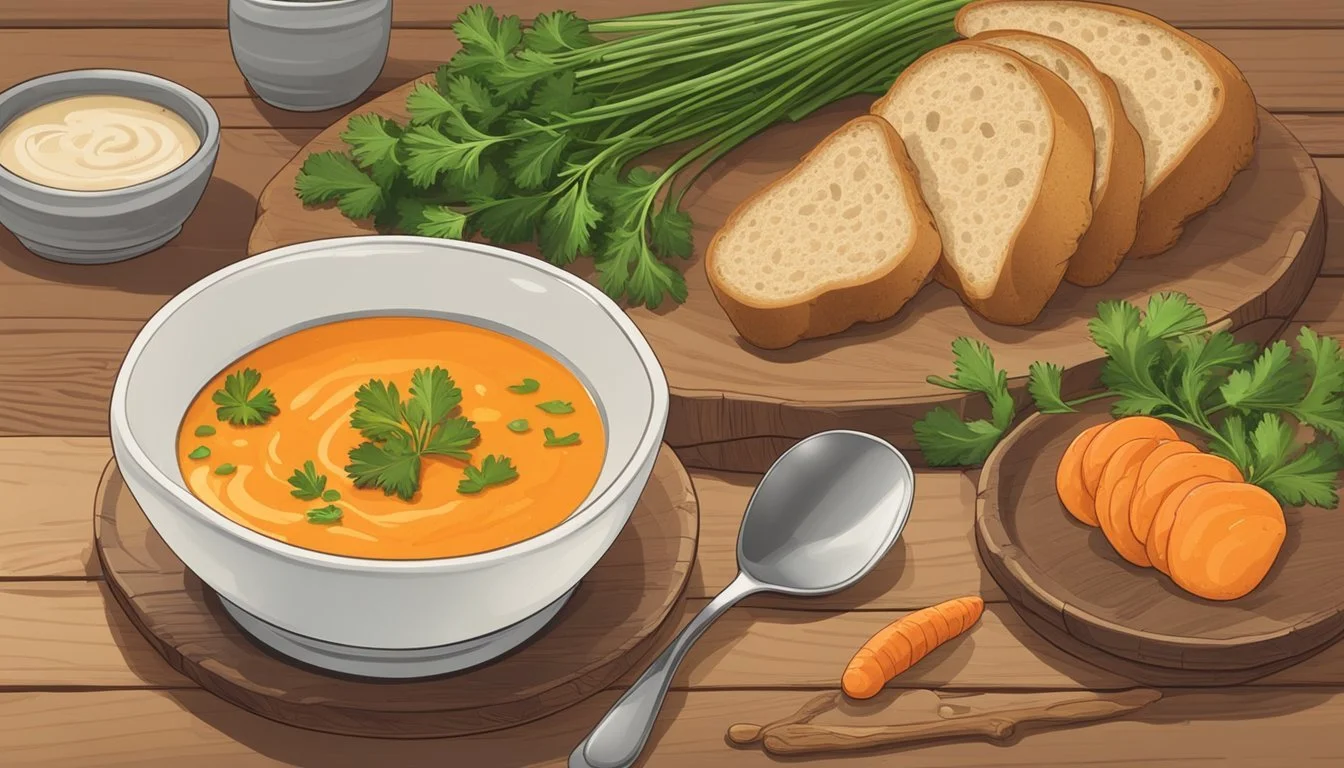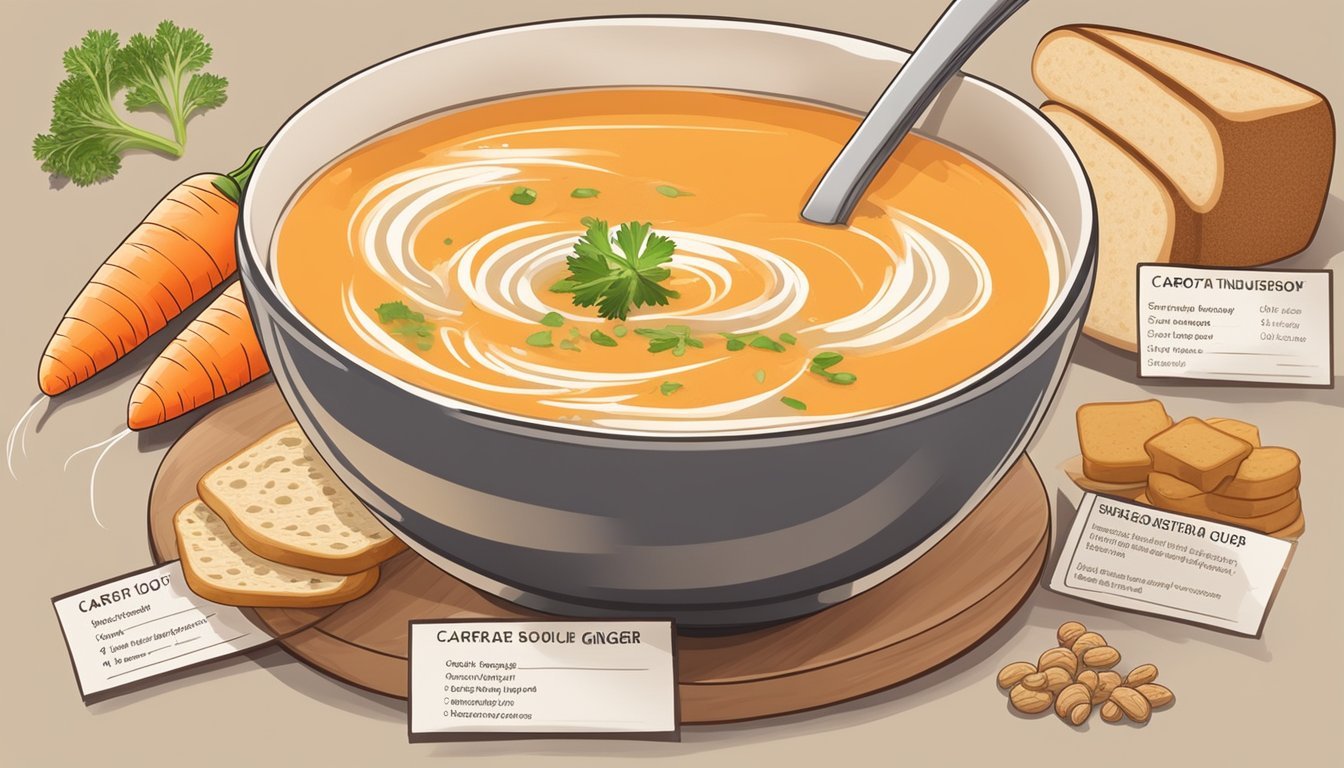How to Reheat Carrot and Ginger Soup
Best Methods and Tips
Reheating carrot and ginger soup may seem straightforward, but doing it correctly ensures you maintain its rich flavors and nutritional value. To reheat a creamy carrot and ginger soup in a microwave, transfer it into a microwave-safe bowl, cover it to prevent moisture loss, and heat on medium power for 2 minutes, stirring halfway through. This method helps retain the soup's creamy texture and maximizes its health benefits.
Carrot and ginger soup is not just a comforting meal but also packed with essential nutrients. Carrots are rich in vitamin A, which supports vision and immune function, and ginger offers anti-inflammatory properties. Reheating the soup correctly helps preserve these benefits, keeping the dish both delicious and nutritious.
Alternative methods, such as using the stovetop, also work well. Heat the soup gently to prevent it from burning or sticking to the pot. This method can be particularly useful for larger quantities, ensuring even reheating without compromising the taste or the health benefits of vitamin C, fiber, and low calories inherent in the soup.
Understanding Carrot and Ginger Soup
Carrot and ginger soup is a vibrant and nutritious dish that combines the sweetness of carrots with the spicy zest of ginger. This healthy soup can be made creamy and is often both vegan and gluten-free, providing a wholesome meal option.
Key Ingredients and Their Nutritional Benefits
Carrots: Rich in vitamins A, K, and C, and essential minerals like potassium and calcium, carrots are the primary ingredient. They also provide fiber and beta-carotene, which is good for eye health.
Ginger: Known for its anti-inflammatory properties, ginger adds a zesty flavor. It aids in digestion and is loaded with antioxidants.
Onion and Garlic: Essential for the base, these ingredients add depth to the soup's flavor. Garlic is particularly noted for its antibacterial properties, while onions offer vitamin C and fiber.
Vegetable Broth: Using a vegetable broth makes the soup vegan and enhances its flavor. It often contains a mixture of various vegetables like celery, carrots, and leeks, contributing to the overall nutrient profile.
Optional Add-ins: Ingredients like coconut milk can be included to make a creamy carrot ginger soup without dairy, keeping it dairy-free and adding a subtle sweetness. Protein-rich items like tofu can be used for additional nutrition.
Soup Variations
Carrot and ginger soup can be adapted in several ways to suit different dietary preferences or flavor profiles.
Butternut Squash Soup: Adding butternut squash creates a heartier and sweeter version, perfect for autumn.
Sweet Potato Soup: Incorporating sweet potatoes lends a different texture and an additional layer of sweetness, enhancing the nutrient content with more vitamins and minerals.
Spices and Herbs: Adding cumin, coriander, or turmeric can introduce new flavors and nutritional benefits. Fresh herbs like cilantro or parsley can be used as garnish.
Dairy-Free Options: For those avoiding dairy, substituting with coconut milk or almond milk keeps the soup creamy and vegan.
Protein Boost: To increase the protein content, ingredients like chickpeas or lentils can be blended into the soup, making it more filling and nutritious.
These variations allow for flexibility and creativity, ensuring that this nutritious and comforting soup can be customized to fit various tastes and dietary needs.
Preparation and Cooking Tips
When preparing and cooking carrot and ginger soup, attention to equipment and ingredients can greatly influence the final taste and texture. Selecting proper tools and maximizing the flavor through tried and tested methods ensures a delicious and nourishing meal.
Using the Right Equipment
Choosing the right equipment is essential for a smooth cooking process and optimal results. A heavy-bottomed Dutch oven is ideal for simmering the soup evenly without scorching. An immersion blender is excellent for achieving a creamy consistency directly in the pot, reducing the need for additional dishes. If using an Instant Pot, the sauté function is useful for initial ingredient preparation. It helps soften the vegetables and blend flavors before pressure cooking. Employ microwave-safe containers when reheating to maintain the soup’s consistency and moisture.
Maximizing Flavor
Enhancing the flavor begins with using fresh, quality ingredients. Opt for fresh ginger and roasted carrots to introduce depth and sweetness. Herbs like thyme and spices such as turmeric and black pepper add complexity. Sauteing onions, garlic, and celery before combining them with the broth will enrich the soup. Salt should be added judiciously to balance flavors without overpowering them. Using low-sodium chicken or vegetable broth ensures a cleaner taste. Simmering the ingredients adequately helps meld the flavors, and finishing the soup with a squeeze of lemon or a sprinkle of fresh herbs, like chives, can enhance its brightness and overall appeal.
Storing Carrot and Ginger Soup
Proper storage techniques extend the shelf life of carrot and ginger soup while preserving its flavors and nutritional value. Refrigeration and freezing are effective methods to keep your soup fresh and ready for future meals.
Refrigeration Best Practices
Refrigeration is suitable for short-term storage. Once your soup has cooled to room temperature, transfer it to an airtight container to prevent contamination and moisture loss. Leftovers should ideally be refrigerated within two hours of cooking.
Store the soup in the refrigerator at a temperature below 40°F (4°C). Label the container with the date to keep track of freshness. Consuming the refrigerated soup within 3-4 days ensures optimal flavor and safety.
Tip: When reheating, ensure the soup reaches an internal temperature of 165°F (74°C) to eliminate any potential bacterial growth.
Freezing and Thawing
Freezing is best for long-term storage. Use a freezer-safe, airtight container to store the soup. Leave some space at the top of the container, as the soup will expand as it freezes. Label the container with the date and contents for easy identification.
For the best quality, consume frozen soup within 2-3 months. To thaw, transfer the frozen soup to the refrigerator and let it defrost overnight. Alternatively, use the defrost setting on your microwave for quicker thawing.
When reheating thawed soup, bring it to a boil to ensure it is evenly heated and safe to eat. This step helps maintain the soup's texture and taste effectively.
Reheating Instructions
To reheat carrot and ginger soup while preserving its creamy texture and flavor, there are effective methods using either the stovetop or microwave. Each approach has its specific steps to ensure the soup maintains its consistency and warmth.
Stovetop Method
Start by pouring the soup into a saucepan. Using medium heat, allow the soup to warm gradually.
Stir frequently to prevent sticking and ensure even heating. This is especially important for creamy soups, as it helps maintain a smooth consistency.
To avoid overcooking, reduce to a gentle heat once the soup begins to simmer. Allow it to simmer for a few minutes until thoroughly heated.
Adjust seasoning if necessary, then serve immediately for best taste.
Microwave Method
Transfer the soup into a microwave-safe bowl. Cover the bowl with a microwave-safe lid to prevent moisture loss.
Set the microwave to medium power and heat for 2 minutes. Stir the soup to distribute the heat evenly. For larger quantities, you may need additional time.
Heat in 1-minute increments, stirring after each, until the soup is thoroughly warmed.
Allow the soup to sit for a minute before serving to let the heat distribute evenly. This method ensures the soup warms quickly while maintaining its creamy texture.
Serving Suggestions
When serving carrot and ginger soup, consider pairing it with complementary side dishes and garnishes to enhance the meal. These additions can turn a simple soup into a comforting and satisfying dinner.
Complementary Side Dishes
Pairing carrot and ginger soup with freshly baked bread such as sourdough or a warm baguette adds a delightful crunch. The bread can be used to clean up the last bits of soup from the bowl, making the meal more enjoyable.
Another excellent choice is a side of roasted vegetables. Vegetables like potatoes, parsnips, or Brussels sprouts, lightly seasoned and roasted to perfection, bring a hearty element to the meal. This works well because these vegetables share the warming, comforting profile of the soup.
Crackers or croutons can be served alongside or sprinkled on top for added texture. Choose plain or lightly seasoned varieties to complement the soup without overwhelming its unique flavors.
What to Serve with Carrot Ginger Soup
Garnishes elevate the presentation and flavor of carrot and ginger soup. Fresh parsley or cilantro can be sprinkled on top for a touch of greenery and a hint of freshness. A dollop of sour cream or yogurt adds creaminess and balances the soup's ginger kick.
For a more substantial dinner, consider serving the soup with a simple salad. A light, crisp salad with a tangy vinaigrette provides a refreshing contrast to the rich, creamy soup.
To round out the meal, cheese toast or grilled cheese sandwiches offer a comforting and cheesy complement that pairs wonderfully with the soup's flavors. The melty cheese and crispy bread create a satisfying bite with each spoonful of soup.
Nutritional Information
Carrot and ginger soup is a nutritious option packed with several essential nutrients.
Carrots are rich in beta-carotene, an antioxidant that the body converts to vitamin A. This helps maintain good vision and a strong immune system.
Ginger adds anti-inflammatory properties, which can support digestive health and reduce nausea.
A typical bowl of this soup is low in sodium, especially if homemade and seasoned mindfully. For those watching sodium intake, using low-sodium broth is advisable.
Fiber content is notable due to the high vegetable content. Fiber aids digestion and can help maintain stable blood sugar levels.
The soup generally contains minimal saturated fat and cholesterol, making it heart-friendly. Using olive oil can further reduce unhealthy fats.
Here's a quick nutritional fact overview per serving (approx. 1 cup):
Nutrient Amount Calories 100-150 Total Fat 3-5g Saturated Fat <1g Sodium 300-500mg Fiber 3-5g Vitamin A 200% DV Vitamin C 10% DV
Adjust ingredients to meet dietary needs: using more vegetables increases fiber, while using less salt lowers sodium. Opting for vegetable broth instead of chicken can reduce cholesterol and saturated fat. Use fresh ingredients to maximize nutrient retention.
Recipe Customizations
Customizing carrot and ginger soup allows for flexibility to meet dietary needs or personal taste preferences. Adjusting ingredients or flavors can transform this soup into a unique and satisfying dish, ideal for winter evenings.
Alternative Ingredients
Substitutions can enhance the soup's nutritional value or alter its flavor profile. Replace olive oil with butter for a richer taste. Substitute sweet potato for carrots to add sweetness and creaminess.
Those preferring less creaminess can use milk instead of heavy cream. To make the soup vegan, replace dairy products with coconut milk or almond milk.
These simple swaps can make the recipe more suitable for various dietary needs or personal preferences.
Flavor Adjustments
Spicy elements like red pepper flakes can be added to give the soup a kick. For a milder taste, reduce the ginger or omit it. Adding potato soup base can enhance creaminess.
To balance the flavor, consider adding a touch of vinegar or lemon juice. Sweeten with a bit of honey if the soup is too savory.
These adjustments help tailor the recipe to an individual's taste, making each bowl a personalized treat.

